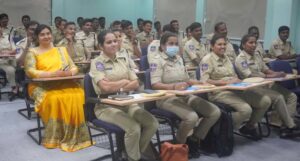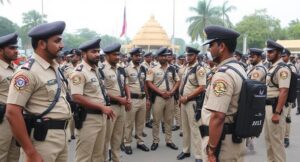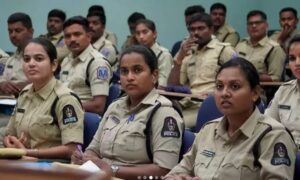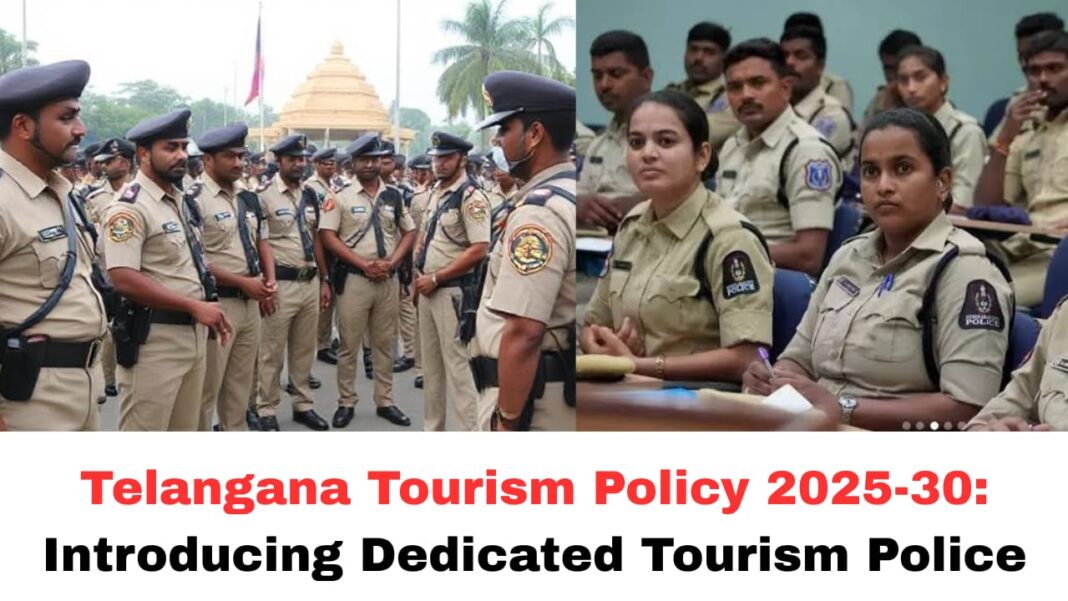Digital News Guru Telangana Desk:
Telangana Unveils Dedicated Tourism Police: A Boost for Visitor Safety
The Telangana Government has officially launched a new Tourism Police initiative, deploying specially trained personnel to key tourist destinations across the state. The move, aimed at enhancing visitor safety and fostering a friendly, welcoming atmosphere for tourists, is part of the larger Tourism Policy 2025-2030 and aligns with the state’s ambitions to increase tourism investments and footfall.
Background & Genesis
The idea of a dedicated tourist police was first floated in August 2025 by DGP Dr. Jitender. During a coordination meeting between the Telangana Police Department and the Tourism Department, it was agreed that about 80 police personnel would be allocated in the first phase to focus solely on tourist safety.
This effort dovetails with Telangana’s newly announced Tourism Policy 2025-2030, which has “safe tourism” as a core pillar. A number of provisions under this policy include establishing tourist police units, implementing measures for women-friendly safety, and devising a Tourism Friendly Index (TFI) to assess safety standards at major destinations.

What the Launch Looks Like
On October 14, 2025, the Tourism Police initiative was formally rolled out. Eighty specially trained police officers were deployed across various tourist sites in the state.
Before taking up field duties, the officers underwent a week-long training program from October 9 to 11 at the National Institute of Tourism and Hospitality Management (NITHM), Hyderabad. The training focused on soft skills, communication, cultural sensitivity, crisis management, and tourist facilitation. As part of their training, they also made field visits to Bhongir and locations around Hyderabad to get a real sense of the terrain and visitor flows.
Deployment & Geographic Spread
The tourism police personnel are stationed at 20 popular tourist sites across multiple districts. Sites in Hyderabad include the iconic Charminar, Golconda Fort, and Salar Jung Museum. Other districts where deployment has taken place are Rachakonda, Mulugu, Vikarabad, Nalgonda, Nagarkurnool, and Bhadradri Kothagudem.
These deployments reflect a diverse mix of tourism: historical, cultural, religious, and natural. Temples, forts, museums, and rural heritage centers are all part of the list.
Aims & Objectives
The Tourism Police initiative has several interlocking goals:
- Enhancing Tourist Safety
With dedicated forces at popular destinations, authorities hope that incidents of harassment, theft, discomfort, or miscommunication can be reduced. A visible law enforcement presence should help deter crime and ensure swift response to emergencies. - Improving Visitor Experience
Beyond safety, the idea is to make the tourism experience smoother — through polite and trained personnel who can assist visitors, share information, manage crowds, facilitate services, and generally be welcoming. Cultural sensitivity, language skills, and soft skills were emphasized in the training. - Projecting State Image
Telangana aims to be seen as a safe and tourist-friendly destination, both for domestic and international travellers. Strengthening the security and hospitality aspects of tourism helps build confidence in potential visitors and investors alike. - Aligning with Policy Frameworks
The initiative ties in with the broader Tourism Policy 2025-2030, which targets investment, job creation, and enhancing the share of tourism in the Gross State Domestic Product (GSDP). Safe tourism is one of the pillars, and the tourism police are a key operational instrument for achieving that.

Challenges and Considerations
While the plan is promising, its success will depend on addressing several challenges:
- Consistency of Deployment & Coverage
Ensuring that tourist police are not just present at high-profile sites but also at lesser-known attractions, remote locations, and during off-peak times. Some remote religious or nature-based sites may be harder to cover. The logistics of deployment, travel, and communication across spread-out sites will matter. - Sustainability of Training & Resources
The first batch underwent strong training, but continued capacity building will be important. Local knowledge, multilingual support, understanding local cultures, and maintaining soft skills over time will need refresher training. Also, ensuring good infrastructure, transport, equipment, and coordination with other departments (tourism, health, transport) is key. - Public Awareness
Tourists—especially domestic and foreign ones—should be made aware of the presence of tourist police, how to approach them, what services they provide, and how to seek help. If people don’t know they exist or don’t trust them, the effect may be muted. - Monitoring, Evaluation & Feedback
The government’s plan includes a Tourism Friendly Index (TFI), but how it will be operationalized, how data will be collected, how feedback from tourists will be integrated, and how policing/policy will be adjusted based on performance will be crucial. - Balancing Security with Hospitality
Police presence can help with security, but over-policing, bureaucratic delays for tourists (e.g. permits for filming or events), or heavy surveillance can sometimes backfire. Striking the right tone is essential: friendly, responsive, helpful, not just enforcement.
Broader Tourism Policy Context
The launch of the Tourism Police is part of a larger agenda:
- Under the Tourism Policy 2025-2030, Telangana is aiming to attract Rs 15,000 crore in tourism investments and generate over three lakh (300,000) jobs in five years.
- The policy also emphasizes “safe tourism”, which includes dedicated police/patrol, women-friendly safety measures, and leveraging the Tourism Friendly Index to benchmark safety and comfort at different destinations.

What This Means for Stakeholders
- Tourists can expect safer, more reassuring experiences in Telangana’s attractions, with personnel who are trained to assist, understand cultural sensitivities, and respond to emergencies.
- Local businesses (hotels, tour operators, guides, restaurateurs) may benefit from increased footfall as safety levels and confidence rise; better policing also means potentially fewer incidents that harm reputation.
- State government and policy bodies will need to ensure the promised resources and oversight are maintained, that the initiative is backed by continuous feedback loops, and that it delivers measurable improvements in both safety and tourism metrics.
Conclusion
The creation of a dedicated Tourism Police force in Telangana marks a significant step in the state’s push to become a leading destination for travellers. With 80 well-trained officers deployed across 20 major attractions, the initiative promises not just enhanced safety but also improved visitor experience, confidence in Telangana’s tourism offerings, and alignment with modern tourism policy goals. If implemented with consistency, transparency, and responsiveness, it could well become a model for other states. What remains to be seen is how these structures evolve: how the Tourism Friendly Index is made real, how remote and off-beat destinations are covered, and how tourists themselves perceive the change on the ground.
You May Also Read: India-Canada Relations: A New Roadmap for Trade, Technology, and Shared Values








